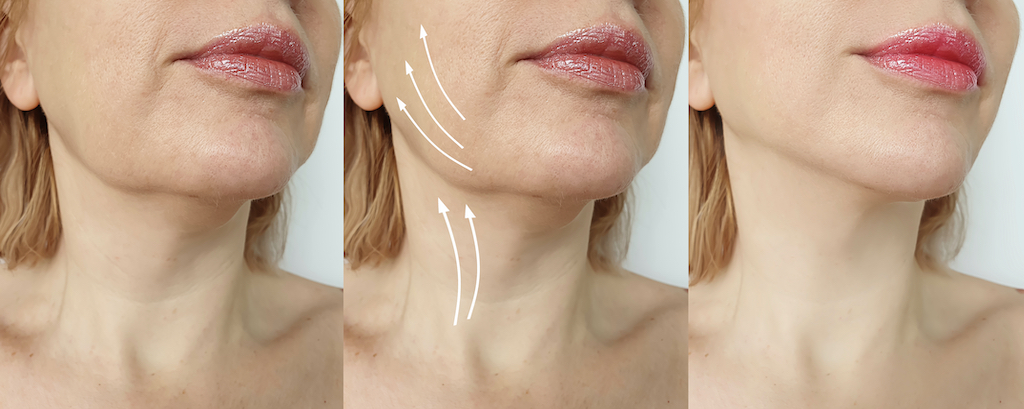Nationally renowned board-certified plastic surgeon, Dr. Jose Rodríguez-Feliz serves local and international clients at his boutique aesthetic practice in Miami, FL. Dr. Rodríguez-Feliz is one of few surgeons in the United States that after completing his Residency in Plastic and Reconstructive Surgery, pursued further training in Oculoplastic and Aesthetic Surgery under world-renowned plastic surgeon Dr. Mark Codner. This gave him the opportunity of nurturing his passion for form and beauty as well as to earn a specialization in aesthetic eyelid surgery (blepharoplasty), complex/revision eyelid surgery, correction of droopy eyelids (ptosis surgery), facial plastic surgery (e.g. face/neck lifts, nose surgery, ear surgery), non-surgical facial rejuvenation (e.g. Botox/Dysport, dermal fillers), and aesthetic breast surgery (e.g. endoscopic breast augmentation).
 Photo Credit: Shutterstock
Photo Credit: Shutterstock
Facelifts have come a long way over the past few decades, and these rejuvenating surgical procedures are no longer reserved for older women looking to undergo a complete (and often obvious) anti-aging overhaul. Today, there are several facelift variations, and the mid-face lift can provide significant improvement for younger patients who are looking to improve a few of the most telling signs of aging with less downtime—and more discretion.
Haute Beauty expert and Miami, Florida plastic surgeon Dr. Jose Rodríguez-Feliz has seen an increased demand for mid-facelifts, and most of these patients are in their late 40s and early 50s. Essentially an abbreviated version of a full facelift, the mid-facelift is ideal for visible signs of aging such as sagging cheeks, undereye hollows and prominent smile lines (also known as nasolabial folds) on the sides of the mouth that make their presence known at an earlier age.
These visible changes are usually due to the effects of gravity over time, which cause the fat pads that lie beneath the eyes, over the cheeks and around the sides of the mouth to droop. Dr. Rodríguez-Feliz prefers taking an endoscopic approach to repositioning these fat pads, address lax muscles and restore a more youthful appearance to the face, which means the entire mid-facelift is performed through small incisions that are placed just beneath the lower eyelids—and are virtually undetectable after the surgery.
When meeting with patients who are interested in a mid-face lift or any facial rejuvenation procedure, Dr. Rodríguez-Feliz utilizes the VECTRA 3D Facial Analysis imaging tool to “map” the contours of the face, facilitate communication about the patient’s concerns, illustrate the ideal correction that can optimize the overall appearance of the face and give patients an idea of what their post-surgical outcomes may be.
 Photo Credit: Shutterstock
Photo Credit: Shutterstock
The ultimate goal of a mid-face lift is to improve sagging and volume loss while smoothing the transition from the undereye area to the cheeks, and this procedure reduces the appearance of laugh lines and helps lift the corners of the mouth as well. Since the incisions beneath the eyelids are similar to those used for lower blepharoplasty (eyelid surgery), many patients choose to undergo this procedure at the same time for more comprehensive rejuvenation.
A mid-facelift helps improve sagging, yet the loss of volume in the cheeks is often an age-related concern as well. To address a hollow or sunken appearance in the cheek area, Dr. Rodríguez-Feliz often recommends fat grafting at the time of surgery to replenish youth-imparting facial fullness. Fat grafting involves harvesting fat from another area of the body (usually the thighs, buttocks or abdomen) via a gentle liposuction-like procedure before the fat is prepared and injected into targeted areas of the face. This add-on during mid-facelift surgery can have a profound impact on the end-result without increasing downtime or risks.
The recovery time after a mid-face lift is generally about 10 days, during which bruising and swelling is to be expected. Most patients are back to work within two weeks, and light exercise is permitted after three weeks. Final outcomes are generally visible two to four months after surgery, and the results are long-lasting.
A mid-facelift is designed to provide the rejuvenating effects patients desire before it’s time for a full facelift. However, it’s important to keep in mind that this procedure does not address the upper or lower thirds of the face, or issues such as forehead wrinkles, brow drooping, jowls and neck laxity. Patients who are bothered by these age-related changes may benefit more from a more extensive facelift procedure, but an experienced plastic surgeon can suggest the ideal facial rejuvenation approach that will improve each individual patient’s specific concerns.
For more information, visit Dr. Brian A. Levine's social media:

























